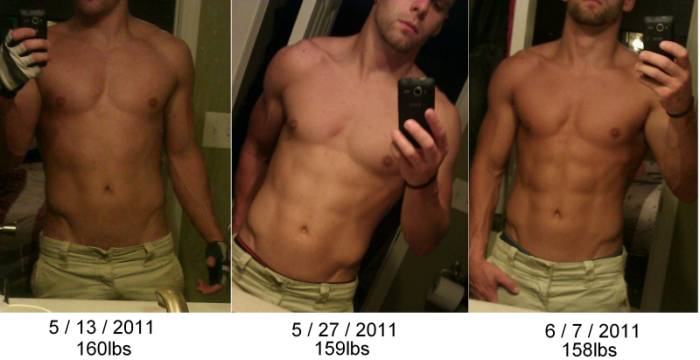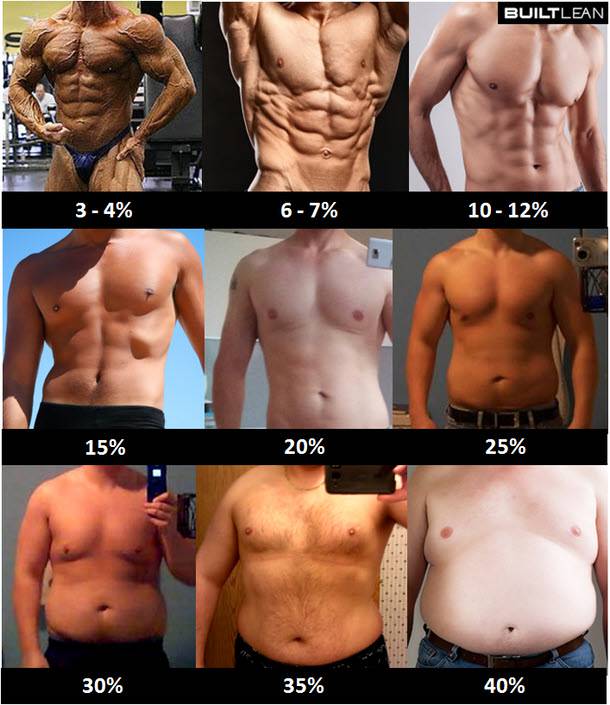What Is a Cut?
In the bodybuilding world, a cut consists of reducing your amount of body fat in order to be leaner, making it so that your muscles become more visible. As we’ve often said before, it’s impossible to gain lean mass without gaining some fat as well, and this is why advanced bodybuilders usually cycle on two phases- they go through a « bulk » which focuses on muscle synthesis, then they « cut », which focuses on getting rid of the extra accumulated body fat.
For many people, cutting is also a good way to show off the work they’ve done to sculpt their body, but also a way to reach this 6 pack eldorado.
Without a sufficiently low level of body fat, muscles will not be very visible; depending on a person’s goals, cutting could either be a way to improve their shape, or to qualify for a weight category for an event; it makes more sense to work towards losing body fat instead of losing muscle mass if lowering the weight is a goal. In this case, cutting is also the appropriate solution.
The following picture shows the evolution of someone’s cut. Muscles become more visible, more « shredded », while the athlete does not lose much weight- we can thus deduce that most of the weight lost was from body fat:
Cutting works through the principal of the «caloric deficit». Basically, this consists of consuming less calories than expended (this is the definition of thermodynamics). When you put your body in a caloric deficit, it will use its own energy reserves in order to keep functioning (energy substrates). As you might have guessed, a cut then always leads to a certain degree of muscle mass degradation (assuming no illegal substances are used). The tricky part will thus be preserving your muscle mass as much as possible, all while pushing your body to prefer using stored fat rather than muscle for energy (lipolysis is the breakdown of triglycerides into fatty acids then usable as energy substrates).
As I will explain later on, this process has metabolic impacts, and great attention will be required during this phase. Mood swings, fatigue, immune system weakness, decreases in athletic performance, etc… all often occur during a cut.
Not only it requires patience, it also requires motivation, and a good knowledge of your physiological limits: wanting to go too far is not often the best strategy, even in this particular case.
How Do I Prepare For My Cut?
Rather than simply starting a cut, I think it’s paramount to prepare it. How?
First, by having a clear goal in terms of shape. In my experience, I’ve noticed that many cuts fail as their efficiency is inversely proportional to their length (longer than 4 months), as after this length you increase your chances of degrading your muscle mass: losing fat becomes harder and harder, and you end up weak and frustrated. Time to say « stop ».
What Kind of Shape Can be Expected?
We cannot talk about cutting, without talking about body fat: the lower it is, the more apparent your muscles will be. The following picture is a good reference in order to asses and determine your goal – and next to this, how much time will be required to reach it.
For instance, with a 25% body fat level, reaching 10% won’t be achieved in a couple of days!
The second thing I consider very important is the fundamental aspects of nutrition, but especially the role of proteins, lipids (or fats) and carbohydrates.
As I will discuss later, every nutrient plays a specific role within the body, and by roughly understanding how they work, you will be able to better control your cut and succeed…like a boss
Thirdly, and this is the most important point here, you need to be realistic enough in regards to your goals. Do not think you will have the shape of a pro-athlete in a couple of weeks.
Be patient and committed; your body is quite a complex vessel: give yourself some time to properly drive it.
What Can I Expect in Regards to My Performance?
As your cut progresses, and depending on how long you have been following it, you may notice a decrease in your performance; but there is nothing to be panicked about. Do understand, however, that if the decrease is too important, then something should be changed. A caloric deficit is something the body perceives as a « threat » (such as a famine period), and lack of strength is a by-product. At best, you can preserve your physical strength, but it won’t really increase (except if you have been training for less than a year), and you won’t gain any muscle: this is not biologically possible. While you are cutting, take some time to check your training performance. If your strength decreases too much, eat a little bit more and rest.
How Do I Cut?Part 2: Deficit and Dietary Supplements




